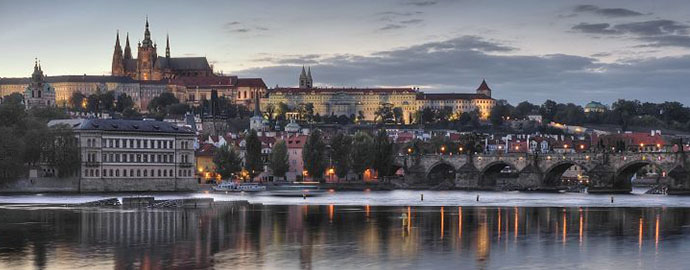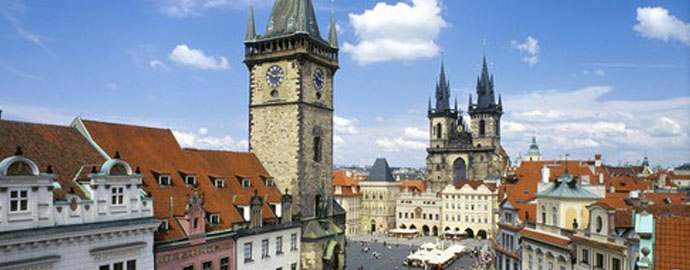Wir empfehlen wo nach Prag
If you decide to stay in Hotel Černý slon, you will find yourself right in the center of ancient Prague, close to Ungelt – Tyn Yard, where in the Middle Ages buyers and sellers from far countries stopped to pay for their business and to declare their goods.
In only a few steps you will reach the Old Town square the oldest square of the ancient Prague, which served as a market place since 10th century. In the houses bordering the Old Town square Romanesque and Gothic-style basements and cellars have been conserved.
In 14th century the major Old Town Church of Our Lady Before Týn was build.
In the middle of the Old Town square there is the monument of Master Jan Hus who was burnt to death in Constance. During centuries the square witnessed many historical events, such as the coronation of kings, revolts, but also executions. In 1621 twenty seven Bohemian Lords were executed here for rebellion against Habsburg Empires. There are 27 crosses imprinted in their memory. In the Old Town square you can also admire the Old Town Hall – tower, astronomical clock, historical halls and underground.
From the Old Town square you can go straight to Josefov, where you will find the monuments of the Old Prague Jewish Town. The oldest Jewish urban settlement originated here in 12th century around Old and Old-New Synagogue. Unfortunately, lots of houses of Old Prague Jewish Town were demolished in city renewal in the end of 19th century. Only a few synagogues were preserved such as Pinkas Synagogue, Klaus Synagogue, Maisel Synagogue,Spanish Synagogue, Jubilee Synagogue dále Jewish Museum and Jewish Hall. In 14th and 15th century Old Jewish cemetery, was founded. Significant personalities from the history of Jewish community in Prague are buried here- for example the most important thinker of the Prague Ghetto Rabi Jehuda Löw, who according to a legend created Golem.
By taking the Karlova street you will reach Charles Bridge, Originally, this bridge was called Judita´s Bridge and its foundations were being mentioned already in 10th century. The foundation stone of Charles Bridge was laid by Emperor Charles IV in 1357. Charles Bridge has not changed since then. There are 30 statues and sculptural groups, mainly from 18th century, located on the side walls of Charles Bridge. By crossing the Charles Bridge you will reach the other side of the river Vltava, more precisely the Lesser Town By taking the ancient Nerudova street from there you can continue all the way to the Prague Castle.











